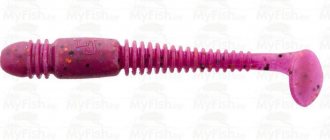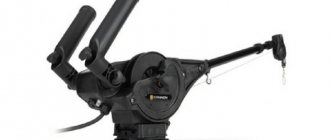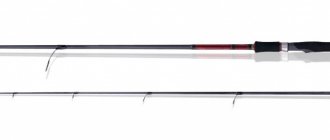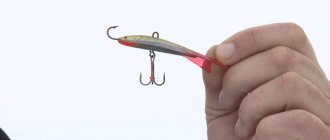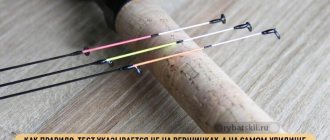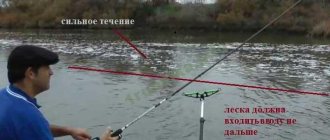Classification of silicone baits
Entering any fishing store, a spinner is faced with the versatility of “rubber”. The counter is replete with a variety of colors, shapes, and sizes. Each model has its own characteristics and differs in properties and purpose. There are the following main types of silicone baits:
- twisters;
- worms;
- vibrotails;
- slugs;
- creatures;
- Octopuses.
Recently, so-called hybrid baits, which are a symbiosis of the listed species, have become popular. They have absorbed all the positive qualities of their “ancestors” and show decent results in the difficult realities associated with fishing pressure and a decrease in the number of underwater inhabitants.
In terms of shape, vibrating tails and twisters are considered the most popular. The first realistically imitate a small fish, imitating its appearance and movements when retrieved. The latter have a cylindrical body and a flattened crescent-shaped tail, attracting predators due to the vibrations and colors created.
Silicone worms are extremely popular among jig enthusiasts. They are used in classic installation and spaced equipment. Very effective when fishing for pike perch, pike perch, catfish and pike. There are two subtypes of these baits:
- Active. They resemble a classic twister with an elongated and thinner body. They work on uniform wiring.
- Passive. Externally, they are similar to a real worm; they do not have a tail or other moving elements. They acquire the game with jerky animation.
Slugs are a classic passive bait, which in the fishing community is called “passive”. Designed for sluggish, apathetic fish. They are used when fishing in difficult conditions - snags, rocky bottom, aquatic thickets.
Creatures are baits that resemble various underwater objects. The most popular are crustaceans. They are used in fishing for pike perch and pike, allowing you to catch large perch and seduce catfish. Silicone crayfish is a first-class “rubber” for classic jig equipment, retractable leash and texas.
Octopuses have been half-forgotten by spinning anglers in the last few years, although they used to be in high demand, especially among pike and pike-perch anglers. They have:
- attractive game on super-slow transfers and free fall;
- respond well to jerking elements;
- excellent catchability when fishing in medium water horizons.
Twisters
The shape of the twister is cylindrical and slightly elongated. The surface is embossed, reminiscent of a larva or fish. Also on its body there may be various processes that imitate the legs of an insect. There are one or two crescent-shaped tails at the end. They simulate frog legs.
A hook is installed in the body of the twister. Body size 5-10 cm, diameter about 1-1.5 cm.
When the bait is in the water, it sways and with these movements attracts pike.
Vibrotails
Rubber lures for pike of this type consist of a body and a tail. Vibrotails (or silicone fish, as many call them) can have a different body shape, which can be narrow-bodied or tall-bodied (more voluminous). The surface is smooth or ribbed. There is a flat extension at the end of the thin tail. This shape is also called hoof-shaped. While in the water, the tail vibrates. The size of the “hoof” is different and the larger it is, the more it vibrates and attracts a predator.
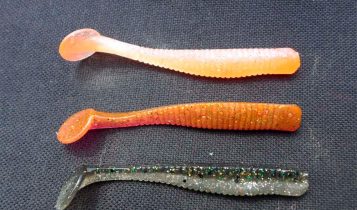
The vibrotail imitates a small fish that a predator likes to feed on.
Slugs
Slugs are a bait that has an oblong body shape and imitates a fish fry. It may taper at the end and be covered with ribbed half rings. Made from soft silicone and can be impregnated with fragrance.
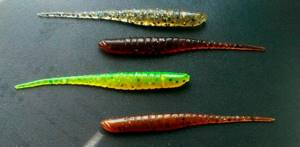
This type of bait is of the passive type. While in the water, it does not produce vibrating movements. The fisherman himself must change the speed of reeling in the reel and manipulate the tip of the spinning rod to create movement of the bait.
Slugs are mounted on an offset or single hook using a hinged mounting. The bait is used in drop-shot, retractable liner and Texas equipment.
Worms
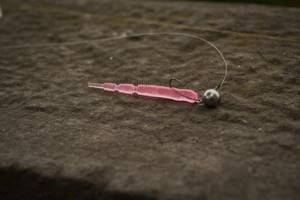
A popular bait for various styles of spinning and microjig fishing. Can imitate a worm, large bloodworm, leech. Typically made from soft silicone. The shape is elongated and may have narrowings and thickenings in various parts. The size varies from small to larger: 10-20 cm with a thickness of at least 7 mm. The silicone worm is equipped with an offset or ordinary hook. They are mounted hingedly, and a small weight Cheburashka weight is added. Or they use a lead leader, a split shot and a Carolina rig.
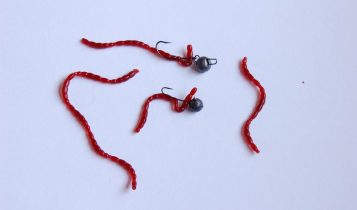
In nature, worms are a universal food for fish. However, targeted fishing for pike with this bait is rare, since the worm is not the basis of its diet. Silicone worms are more suitable for catching perch. But there is an exception: large worms and twister worms with active play can well be used to catch pike.
Crayfish, nymphs and other fancy baits
A separate group consists of types of silicone baits that resemble the inhabitants of the underwater world: crayfish, nymphs, frogs, tadpoles, etc. They are the favorite food of fish and attract their attention well.
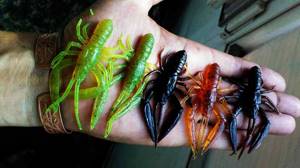
Numerous branches emanate from the body of the bait, imitating claws, fins and tentacles and all sorts of fancy variations of them. They sway underwater and when the fish sees them, they perceive them as live food. The angler himself must increase the vibration frequency of the passive bait in the form of small twitching or dragging along the bottom.
By using non-standard baits, you can alternate them to find a more attractive bait for pike.
Silicone wobblers
Another type of silicone bait. A silicone wobbler differs from a regular one in the material it is made of and, in some cases, in the presence of an additional tail. Otherwise, their design features are similar: there is a blade in the front part and tee hooks. Can be used both when fishing for pike and as bait for other predatory fish.
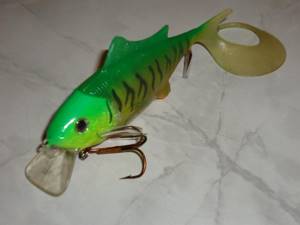
Photo: Rubber wobbler for pike
Advantages and disadvantages of fishing with edible rubber

Spinning fishing with rubber has a number of significant advantages and disadvantages compared to many other artificial spinning baits. One of the important advantages of silicone is its affordable price. Catching many species of predator involves difficult conditions of the bottom topography and the presence of vegetation, which causes frequent losses of baits, making them consumables, which the fisherman sooner or later has to come to terms with. The loss of silicone is not considered a catastrophic event, as in the case of the loss of an expensive wobbler, and this gives an advantage to the more frequent practice of using this type of bait in cramped, but promising conditions for the presence of predators.
The realism of the simulator's game can be safely attributed to the second important advantage of rubber. Few baits can boast of these qualities on regular even retrieves. Therefore, silicone is recommended for beginner fishermen who are just mastering spinning fishing techniques. The presence of an attractant in silicone only increases its attractiveness to predatory fish, and manipulations with odors help the spinner to hunt for a certain type of prey, based on its preferences when choosing a natural prey.
For an objective assessment of the product, it is worth focusing on a number of shortcomings that should be taken into account when using edible bait in order not to get into an uncomfortable situation in real fishing conditions by noticing the loss of the main working qualities of the bait.
First of all, you need to know that edible rubber has a certain shelf life, after which the attractiveness of the nozzle is lost. Even when containing silicone in sealed conditions, within a couple of years the bait dries out and becomes brittle or loose, losing elasticity and odor intensity. In addition, it is recommended that after each bite, and subsequently fishing, you check the silicone for critical damage and, if any, change the tool, because soft material is susceptible to destruction not only from the grip of the fish, but also from the constant interaction of silicone with the hook.
Types of “rubber” based on material of manufacture
Silicone baits are divided according to the material from which they are made. This determines their working properties, conditions of use and fishing technique. There are several categories of “rubber”:
- “inedible” silicone baits;
- "edible rubber";
- floating silicone.
All of them are used in the spinning direction in different fishing methods, making it possible to successfully hunt for predators living in our reservoirs.
Classic soft baits
Silicone made from inedible material is the oldest category of baits, which began the widespread popularity of jig fishing methods. They are made from banal soft plastic by pouring molten “rubber” into special molds.
Today baits are produced in all shapes and sizes. They are low cost, versatile and catchy. There are real bestsellers among inedible “rubber”, such as “Mann`s”, “Relax”, “BassAssassin”. Silicone worms, twisters and rippers from these manufacturers are used mainly in classic jigs, lead lines, drop shots, and mounted on jig heads.
Edible silicone
Today, edible “rubber” is the most popular and sought-after category of jig baits. It is present in the arsenal of any spinning fan. These baits effectively catch the fish that inhabit our water bodies throughout the open water season.
These baits are made from a special material consisting of amino acids. Additionally, it is impregnated with an attractant, increasing its attractiveness to predators. Once in the fish’s mouth, the edible “rubber” does not alarm it and does not cause rejection. As a result, the angler has the opportunity to make a clear, precise hook, minimizing the derailment.
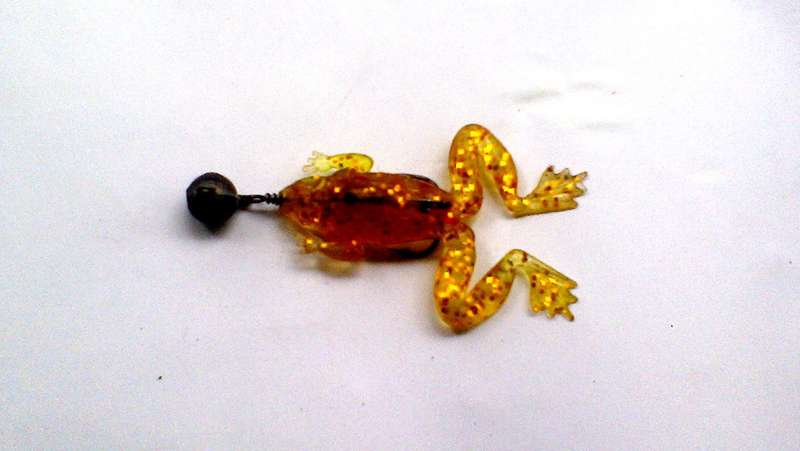
Photo 4. Silicone frog.
The best edible baits are produced by Japanese concerns. Their range includes not only classic forms of silicone. In the catalog you can find various crayfish, imitations of squid and larvae, there are such rare models as the unhooked frog and others.
The disadvantage of edible “rubber” is its low strength. The material quickly becomes unusable. Sometimes one confident bite is enough to break it completely. It is useless to repair silicone baits of this type. It is necessary to replace the non-working silicone with fresh one. Therefore, in terms of economy, the “edible” is inferior to ordinary twisters and vibrotails.
Artificial bloodworms and maggots
Artificial maggots and bloodworms have recently gained popularity among lovers of peaceful fish fishing. This bait is used in feeder and float fishing methods. It is used to successfully catch bream, roach, trout, silver bream, saberfish, rudd and other types of fish.
Externally, artificial bloodworms and maggots do not differ from live bait. They have similar sizes, colors, and an attractive smell to fish. Supplied in transparent jars, impregnated with flavoring and oil. Have the following advantages:
- Long shelf life. They will not deteriorate like natural bait.
- Durability. One bait can withstand many fish bites. Basically, it can be used until it comes off the hook.
- Reasonable price. These artificial silicone baits are available to almost any angler.
Fishing with artificial bloodworms and maggots is possible in paid ponds and quarries, in enclosed lakes and swamps, in large reservoirs and rivers. The bait is all-season and works all year round. Some fishermen even use it when fishing from ice.
Top 10 rubber lures
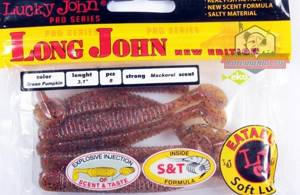
The rating of edible rubber presented below will be an excellent assistant for the reader in completing an effective arsenal of baits when catching freshwater predatory fish, by collecting which he will, without a doubt, be able to count on a high chance of success. The models and manufacturers of the product presented in the rating have already earned the trust of spinners and are very popular in use.
- Lucky John, which is affordable in terms of price characteristics, opens the ranking in the first position . The edible products from this company are distinguished by their long-lasting odor and a wide range of colors. The manufacturer produces an edible version of almost all forms of silicone.
- The second line goes to the Japanese brand Keitech , whose models are more expensive than the top leader, which influenced the lowest rating level, but are distinguished by high material density and, therefore, are less susceptible to deformation from hooks and contact with small underwater obstacles.
- Three behind the multidisciplinary fishing company Kosadaka . Its products are famous for their reasonable prices and ideal ratios of bait ingredients that do not leave the angler without a catch.
- In fourth position is the Chinese brand Crazy Fish . The company was able to achieve high quality parameters for its products and thereby earned the trust of spinners. In addition, the budget level of cost will please every fisherman.
- The top five will be closed by another Japanese representative, Reins . Its edibility is distinguished not only by its stability and variety of odors, but also by the presence of different sized options among the models, allowing you to specifically hunt for large fish.
- On the sixth line we put the Italian Molix . Models of edible rubber of the European brand differ in the type of fish, which makes it easier for the fisherman to select baits for the specific type of fishing.
- Seventh place goes to the world famous American manufacturer Manns . A distinctive feature of the models is considered to be a variety of color options that are almost impossible to find among competitors.
- Number eight remains for Bass Assassin . Baits of various shapes with exotic but effective aromas constantly bring trophy specimens of the predator into catches, but the disadvantage of the product is its high price.
- On the ninth line is the company Gary Yamamoto . Having a couple of creative forms of edibles in the fisherman’s arsenal will be useful for experiments in moments of complete lack of bites, which sometimes brings results that are surprising in their size and quantity of trophies.
- The top 10 is completed by the Fox Rage . The low cost of a wide range of products, including models of floating edible rubber, will never be an extra in a spinner’s fishing box for catchability in a variety of conditions.
Floating silicone
Floating “rubber” can be edible or ordinary. The degree of its buoyancy depends on the density of the material. If the specific gravity of the bait is lower than that of the water, then it floats; if not, it sinks. The ability of some models to stay afloat gives the fisherman a number of advantages:
- The bait imitates a fish swarming in the ground, which attracts a predator and does not alarm it.
- When hunting for passive fish, you can take long pauses, while the “rubber” does not lie like a stone on the bottom, but continues to oscillate under the influence of the current.
- You can carry out wiring while “stomping around” in one place. For example, the bait stops near a snag, and the fisherman gives it attractive movements with slight twitches. At the same time, it remains at a given point, forcing the most well-fed predator to grab it.
- The bait is visible to fish from a long distance, which is especially important when fishing in muddy water and using bright, provocative colors.
Floating silicone is usually mounted on a classic hinged mounting with an eared sinker and an offset or single hook. Silicone worms are very popular among this type of “rubber”. It is important not to overdo the weight of the single bait so that the bait does not lose its positive buoyancy.
general characteristics
Currently, floating silicone baits are widely popular among spinning fishermen. They have proven themselves excellent in catching predatory fish species and have won well-deserved recognition from both experienced and novice fishermen. With the correct selection of such baits, a rich catch is always guaranteed. But how to understand all the available variety of these very, very popular products?
To do this, first of all you need to know what this type of gear is. This product is an imitation of various living organisms (worms, larvae, fry, frogs, etc.) that make up the food supply of aquatic predators. To decide on the choice of bait, you should consider their classification by shape, size and color.
Bait shapes
There are different types of bait types presented. The predator reacts actively to floating silicone. But you need to choose a product that best matches the type of fish food supply. There are the following types of such baits:
- Twisters. They consist of a cylindrical body and a flat, soft, sickle-shaped tail. Sometimes there are several of them. The surface of the body is often ribbed or wavy. From a distance, the twister resembles a larva. It is used for active play, thanks to which the tail vibrates, attracting a predator.
- Vibrating tails. They have a specific flat tail, always located perpendicular to the body of the bait. In appearance, vibrotails look like fry. Different models have different tail angles, which adds additional variety to the game.
- Silicone worms. They imitate real worms very realistically. They are usually a passive bait, but there are models with a soft tail that actively play with various types of wiring.
- Slugs. Passive bait, not intended for wiring. Copies a small flat fish or a large worm with its tail torn off.
- Frogs. Those made with legs belong to the active type of bait. Those with soft rubber fringes instead of paws are classified as passive. The fringe sways with the movement of water and attracts the attention of a predator.
- Creatures. They imitate the shape of a wide variety of underwater inhabitants, most often crustaceans.
You need to have several types of bait with you. You may have to experiment to get the predator to pay attention to the item on the hook.
To size
Silicone sizes are suitable for all types of spinning fishing. So, with the smallest baits you can hunt with ultralight for microjigs. Such silicones have sizes from 0.5 to 1.5 inches. Most often, baits in sizes from 2 to 9 inches are used for spinning fishing.
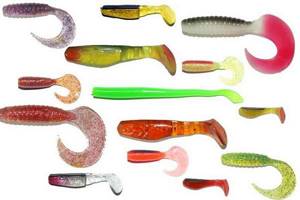
In trolling fishing, large silicone fishing baits are used, the size of which exceeds 10-12 inches. Based on the size of the simulator, a jig head and hook of suitable weight are selected for installation. At depths of up to three meters in standing waters, silicone in the size of 2–4 inches with a load weight of 6–8 grams is suitable, and in currents the load is increased to 10–12 grams. A five-inch bait under the conditions described above on a reservoir is equipped with a load of 10 grams and 12–14 grams in the current. A 7-inch simulator is accordingly supplemented with a sinker of 12 grams in calm water, and about 15 grams in currents. As a rule, the size of the hook should not be more than 1/2 the length of the bait being equipped.
Types of color solutions
Fishing with silicone baits is successful due to the varied colors of the products, which have a wide spectral range. Silicone is quite easy to color, so you can find the product on sale in natural colors and exotic colors. Thus, manipulations with color selection make it possible to fish in water with varying degrees of transparency, and also contribute to the selection of baits for hunting in different weather and time of day, despite the variability and intensity of natural light.
Based on the brightness of the color, silicone can be selected for fishing at different depths. The most common are light green or acidic colors, brown or machine oil color, carrot, bright orange or intense red color. All types of paints can be supplemented with inclusions of fluorescent elements or sparkles that increase the fish’s interest in the bait, to which a hunting object such as perch responds best.
Material
For the manufacture of artificial baits, various materials are used, on which the performance characteristics of the product and the scope of its application depend. Usually, based on the type of material used, they are distinguished:
- classic inedible baits;
- baits made of edible silicone;
- floating silicone baits;
- artificial maggot, worm, bloodworm.
Over the past few years, floating varieties of baits have achieved well-deserved recognition among fishermen. And this is not surprising - the predator reacts very actively to such silicone. Currently, these baits are produced in both edible and inedible versions.
Advantages
Possessing maximum similarity to the food items of predators, a floating silicone bait invariably attracts their attention. It has proven itself well when catching sluggish fish, as it remains afloat during long pauses during slow retrieves.
In addition, when the movement stops, such a bait is located perpendicular to the bottom, and in this position it is much easier for a predator to attack it.
According to reviews, such products show excellent results when using the “drop shot” fishing technique. The bait is indispensable in reservoirs with strong currents and in places with an overgrown bottom, since it does not sink down, does not cling to algae and is able to play in water currents.
Passive and active silicone
Date: February 6, 2015 | 779
In any field, for a better understanding of approaches and techniques, for the competent use of tools, systematization is needed. When you know the capabilities of tools and accessories, their use becomes much more conscious and effective. Fishing is no exception. In such a section as jig, soft baits, there is its own classification. Modern silicone baits are divided according to many characteristics and parameters: shape, size, color, smell, buoyancy, etc. One of the most important types of classification of rubber, resulting from its shape, is the division of lures into active and passive. Let's talk about this in more detail now.
It should be said that in the classical sense, silicone baits were, at first, active. When the era of edibles had not yet arrived, soft plastic and silicone baits appeared. These were active silicone baits - vibrotails and twisters. The key feature of these baits is that during normal smooth, uniform retrieving they emit vibration and oscillations, thanks to the structural elements. The vibrating tail vibrates a thickened penny tail, and the twister has a sickle-shaped tail.
Of course, this does not mean that active baits are carried only evenly, far from it, they are also driven in different ways, with steps, tosses, waves, etc. But, the phase of simple uniform wiring is effective and attractive for fish.
Passive silicone , as you might guess, does not have its own play during uniform wiring. The entire game of passive silicone baits is created by the spinning player using the movements of the tip of the tackle and manipulation of the reel.
Basically, passive silicone began to actively develop in edible products. Only twisters and vibrotails are still produced from ordinary silicone. From softer silicone, which is also impregnated with attractants, baits are made in a wide variety of shapes. Their ranks also include twisters and vibrotails of various shapes, but also many other types of baits.
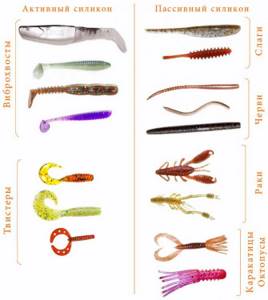
Active silicone : vibration tails and twisters.
Passive silicone : slugs, worms, crayfish, cuttlefish, octopus.
There are also some intermediate options, so to speak, exceptions to the rules. Let's say a worm with such an underdeveloped twister tail, or a crayfish with thickenings on its claws-flippers, have some kind of their own game on uniform wiring. So, such baits can be classified into both categories. However, such hybrids are still more often carried out as passive silicone, by jumping, drawing, etc.
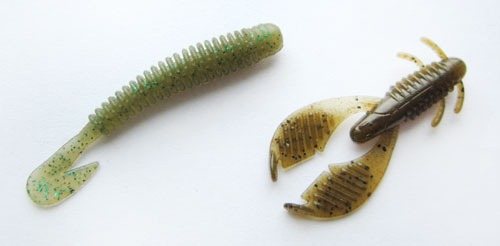
As you can see, most silicone baits imitate the usual food of fish in a pond, which is why they are so effective. Vibrotail is a fish that works with its tail. A twister is something incomprehensible, but it emits a vibration that the fish perceives as the movement of a fry or some kind of insect in the water. A slug is an imitation of a fry or a leech, providing a much wider range of animation possibilities than a vibrotail. Silicone worms - no comment. Crayfish are an excellent bait because... small crustaceans are common food for fish in many bodies of water. Cuttlefish and octopus, tubes, although they do not have direct analogues in the freshwater environment, their tempting game, reminiscent of the swarming of some living creatures at the bottom, is also very effective.
It is clear that simple silicone is not very attractive to fish as a material. It is not tasty and has a nasty chemical smell. Only its softness can deceive the fish and force it not to spit out the prey for some time. Usually, the hooking is already in time and it’s “too late to rush around.” However, edible silicone is much more attractive to fish. He beckons her from afar with attractant secretions. When the fish takes it, it is not only soft, but also tasty, thanks to special additives. So, the fish holds it longer and the hook is sure to catch it.
It was this attractiveness of the material itself that helped move away from active baits to passive ones. There is no need to simply lure the fish by vibrating the body of the bait. Its more sluggish manner of movement, more varied, created by the spinner, through the tip of the spinning rod, allows you to reveal the capabilities of the jig bait much more widely and give it special movements. Even a not very active fish cannot resist such a thing, although ordinary vibrating tails swimming by may not cause any reaction.
By removing our own vibrations, adding greater softness, smell and taste of the attractant, and introducing a form that resembles real food - we get a bait of a high degree of efficiency, unprecedented before.
A competent spinning angler successfully combines the use of various baits, passive and active. Active silicone works better for active perch; when fishing for pike, the usual uniform wiring of active silicone baits often also works well. If the fish is more passive, or there is not much room for retrieving, you have to stomp on the bait almost in place - there is nothing better than passive silicone.
We will talk about the features of using specific types and forms of silicone baits in separate articles, because... These are broad and multifaceted topics. Do you want to know about specific forms of edibles and silicone baits? Use search!
Share with your friends:
Categories: Edible · Tags: Jig, Microjig, Lures, Silicone, Edible
Types and sizes of silicone baits for pike
Silicone lures for pike have appeared in our specialized stores relatively recently. Such baits are the most effective for the jigging (moving, dancing) technique of pike fishing and are the most popular in the list of soft baits. On the shelves you can find all sorts of colors, shapes, and sizes of baits. All silicone baits have a hook. Attractants (natural or chemical substances that attract by smell) are added to some silicone baits for pike fishing; it is believed that pike react to such bait faster.
We will consider the types and sizes of silicone baits in more detail below.
Conventionally, artificial baits for pike can be divided into four types:
- vibrotail, in shape resembles a small flat fish with a movable tail, once in the water, the vibrotail begins to actively move, very much resembles a fry, while vibration and noise are created to attract pike;
- twister, one of the types of bait that does not look like a fish. An oblong ribbed body, at the end of which a sickle-shaped tail is attached. The soft silicone body gives a resemblance to larvae with a movable tail, does not scare away the predator, and attracts the attention of the pike with a very soft and smooth movement. There are a great variety of twister colors: red, yellow, green, pearlescent;
- long, imitation worm baits with a thickened head and a small cylindrical thickening in the middle part, a length of 5 centimeters, a weight of 0.4 grams. The nozzle very accurately imitates a worm, has good buoyancy, and at the moment of contact takes a vertical position, thereby creating convenience for swallowing the hook;
- fantasy: frogs, cuttlefish, leeches, worms, bloodworms, maggots. In appearance they are in no way inferior to real creeping ones, fit very well on a hook, and can be used many times.
Color
For successful fishing, it is important to make the right choice (color) of silicone bait for pike.
When choosing the color of the nozzle, there are several factors to consider:
- the depth of the reservoir, the greater the depth, the paler the color of the bait in the water;
- transparency of the water, with clear water it is more appropriate to use a dark silicone nozzle;
- place of fishing;
- the specifics of the reservoir (what is the most abundant fish found), bait that imitates a specific fish.
Experienced fishermen prefer several colors of bait:
- pike reacts most actively to the yellow tint of the main part of the equipment with the presence of red on the back in the early morning;
- in bright sunlight, pike bite on pearlescent iridescent bait;
- on a windy and rainy day, the predator actively approaches the pearl bait with a black back;
- if the predator is inactive, then you should use an iridescent bright color of the bait with a red back;
- at sunset, when the pike lazily goes out to hunt, they lure the predator with baits with yellow tints.
Silicone baits and their characteristics
Currently, you can find a large variety of silicone lures for pike, which can be nominally divided into 4 types:
- Type 1 includes vibrating tails, where the play of the tail (hoof-shaped tail) during wiring attracts a predator.
- Twister-shaped baits, where the tail is shaped like a sickle, belong to the second type. The game of twisters is effective not when wiring, but when falling.
- Type 3 includes lures with a long body that imitate worms.
- And up to 4 species can be included - sausages, cuttlefish, leeches and even fancy species, etc.
The main selection criteria are:
Shape and size of bait
The shape and size of the bait should be given attention. It is better to choose a vibrating tail with a high body; a twister should have a wide tail. A very important element is the tail section. A wide and massive tail, when retrieved slowly, effectively imitates a live fish.
It is advisable to place bait measuring from 8 to 10 cm, and especially in shallow water. In the summer, when the air temperature is especially high, choose silicone with a size of up to 7 cm. Fishermen know that silicone needs to be purchased with a size of 5 cm or more.
Color
It is advisable to have in the box:
- White, red-white, golden-white and ice color (blue).
- Black color.
- Yellow and green.
When choosing a color, it is necessary to take into account the depth of the reservoir, because with each meter of immersion, the bait with a sunny color fades, and the color spectrum disappears. In this case, when fishing at depths, the ideal option is light blue silicone.
The main factors for choosing a color are:
- Food preferences of pike in this reservoir.
- Times of Day.
- Water transparency (the lighter the water, the darker the color of the silicone).
Material
Ideally, when retrieved, the tackle should play with its tail and swing from side to side. Such movements will be ensured by high-quality material, especially when choosing a vibrating tail. It has been proven that the softer the silicone rubber, the higher the low-frequency and amplitude vibrations of the bait.
Fishing place
twisters
So:
- On the bottom with snags, twisters and all kinds of worms with offset hooks have proven themselves to be effective.
- In fast currents, narrow-width baits are optimal.
- In shallow water with grass, frogs made of silicone have proven themselves well.
Installation of silicone baits
There are several ways to mount these baits. So, you can attach a double hook, in this case, first the bait is pierced in the middle of the body with one needle, and then the eye is pulled to the middle and along the inside to the mouth of the bait. The eye of the hook must be protruded from the mouth of the bait and connected to the sinker, and then to the leader. Before starting the procedure, it is necessary to unclench the double by 4-6 mm.
Installation of silicone on the offset hook is done through the front part. You need to pierce the mouth and neck of the bait with the hook, turn the hook and hook it on the belly. It is necessary that the eye of the hook protrudes only a few millimeters to attach the jig.
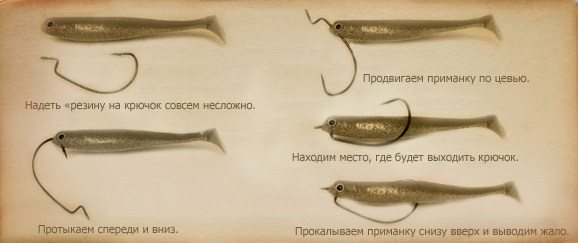
installation of silicone on an offset hook
Features of fishing with silicone
A successful catch largely depends on the correct presentation of the bait and its appropriate wiring. Over time, the angler will develop his own individually effective style.
There are 2 classic options for catching pike. According to the first option:
- Casting
- A short pause (3-5 seconds until the bait reaches the bottom of the reservoir).
- Slow bottom tracking.
In the second option:
- Cast and pause.
- Wiring with pauses (make up to 10 slow turns of the coil, then a 2-3 second pause, 10 turns of the coil, pause, etc.).
Storing silicone baits
The big advantage of silicone baits over other baits is their repeated use. With proper storage of silicone baits and the necessary repairs (touch-up, strengthening of the hook), such fishing tackle will last for more than one season. It is unacceptable to store silicone baits of different colors and materials in one place. As a result, baits can stick together, repaint and fade into other colors. Real fishermen have a special container with cells for this purpose.
Sources
- https://fishelovka.com/lures-bait/obzor-silikonovyh-primanok
- https://schukar.info/snasti-na-schuku/silikon.html
- https://FB.ru/article/384777/plavayuschaya-silikonovaya-primanka-opisanie-osobennosti-i-rekomendatsii
- https://IaRybak.ru/prikormka-i-nasadki/silikonovaya-primanka
- https://poklevka.com/primanki/74-silikonovye-primanki-na-schuku.html
- https://lakeking.ru/ryba/pike/silikonovye-primanki.html

